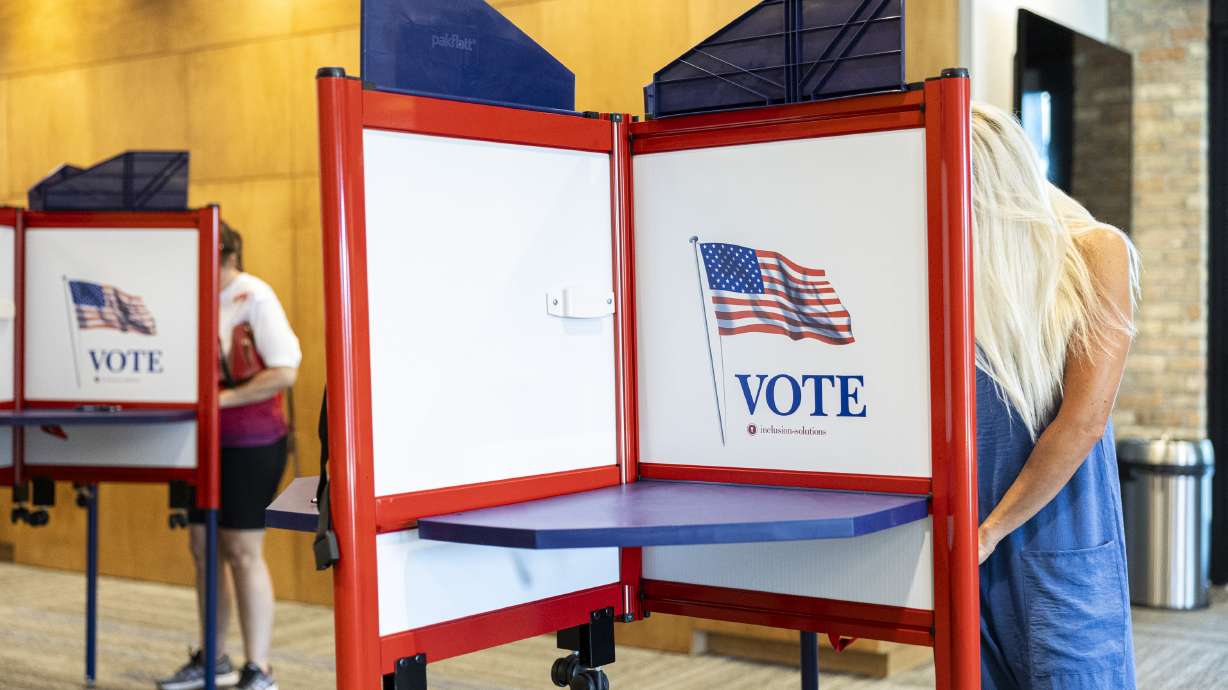Estimated read time: 4-5 minutes
This archived news story is available only for your personal, non-commercial use. Information in the story may be outdated or superseded by additional information. Reading or replaying the story in its archived form does not constitute a republication of the story.
SALT LAKE CITY — A new report from the state elections office found several discrepancies with the number of votes cast and a high rate of rejected signatures on mail-in ballots in Utah County during the recent primary election.
The report stems from a review from the state elections office into the county's procedures following the June 25 statewide primary election, based on "concerns over reconciliation at Utah County polling locations and above average ballot signature rejection rates."
Those discrepancies resulted in at least 19 more ballots being cast than voters who checked in at polling locations, according to the report.
The report blamed those discrepancies on an in-person voting method unique to Utah County implemented by County Clerk Aaron Davidson called "fast cast," which state officials say may have allowed some voters to turn in multiple ballots.
The fast-cast program Davidson implemented allowed voters to scan their completed mail-in ballot directly into a vote tabulator at an in-person polling place after showing identification. The report said Ryan Cowley, the state's director of elections, "expressed concern about the potential for individuals to scan more than one ballot without the poll workers' knowledge."
"In order for the 'fast cast' tabulators to read by-mail ballots, a key security feature must be disabled," the report states. "Disabling this would allow for any ballot to be read, creating the potential for multiple ballots to be scanned in by a single voter."
Davidson, according to the report, believed the difference in vote totals was the result of "confusion with poll worker training" and staff in his office believed "these voters were properly verified, but the check-in process was not fully completed by polling place staff, meaning those voters did not receive vote history."
State officials said there is no way to verify that, and said it is "conceivable" voters could have used the fast-cast system to cast more than one ballot or skipped checking in at their polling place, noting that "either would be a violation of Utah law."
"We don't know for a fact that those were fraudulent, but we can't prove that they weren't," Shelly Jackson, deputy elections director, told KSL. Jackson was part of the team that reviewed Utah County's election process and visited the clerk's office on July 2.
The findings also state that the clerk's office did not reconcile the number of voters who checked in to vote with the number of ballots cast at each polling location, something poll workers should do regularly during the day at polling locations and during the canvass period following Election Day.
"Due to the inherent lack of controls in 'fast cast' voting and the subsequent noncompliance of Utah election law, the Utah County Clerk's Office must either abandon the 'fast cast' voting method or make significant modifications to bring it into compliance with state code," the report states.
Davidson — who has questioned the U.S. Postal Service's ability to deliver mail-in ballots and decided this year to have the county stop paying return postage on mail-in ballots to discourage the practice — defended his system as one that makes in-person voting quicker and easier.
"The fast cast method maintains the verification of showing up in person, showing your ID, signing the poll pad, but not having to wait in line for the next available voting booth," he said, adding that in-person votes don't need to go through the signature verification process "which carries a risk of that ballot having to go through the cure process."
The report also found the rejection rate of signatures on mailed ballots in Utah County was "higher than the statewide average and more than five times higher than its 2023 primary election rejection rate."
Officials also looked into this during their July visit by examining a sample of signatures from poll workers, specifically those with high and low rejection rates. They determined that for one such employee with a high rejection rate, about 25% of the rejected signatures should have been accepted.
A lack of high-quality signatures on file could also be a contributing factor in the rejections, the report said, recommending that the clerk's office "make a concerted effort to obtain and save higher quality signature images as voters submit updated voter registration forms, affidavits, other forms, etc." The report said, "Some of the signature images on file in Utah County are grainy or unclear."
While verifying each voter's signature is important, the report concludes some poll workers were too strict in reviewing signatures, potentially making it harder for them to vote.
"I definitely think there was an unnecessary barrier to voting," Jackson said.
The report also found the clerk's office "underutilized" audits during ballot processing and recommended that the clerk "review and implement the audit policy established by the lieutenant governor's office."
Contributing: Lindsay Aerts









